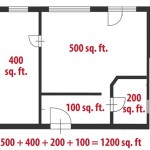What Plane Just Went Over My House Today? Unraveling Aerial Mysteries
Hearing an aircraft overhead is commonplace in modern life, especially for those residing near airports or within established flight paths. However, the question, "What plane just went over my house today?" often arises from curiosity or even concern. Identifying an aircraft solely by sight or sound can be challenging, but various resources and methods exist to help decipher the airborne mystery.
Determining the type and origin of an aircraft can quell anxieties about unusual flight patterns, satisfy intellectual curiosity about aviation, or even provide insights into local air traffic operations. This endeavor involves leveraging technology, understanding aviation regulations, and sometimes, engaging with local communities.
Understanding Flight Tracking Technology
The most readily available tool for identifying aircraft is online flight tracking software. These platforms utilize Automatic Dependent Surveillance-Broadcast (ADS-B) technology. ADS-B is a surveillance technology where an aircraft determines its position via satellite navigation and periodically broadcasts it, enabling it to be tracked. Many aircraft are equipped with ADS-B transponders, which automatically broadcast information such as: identification, position, altitude, and velocity.
Websites and mobile applications like Flightradar24, FlightAware, and Plane Finder collect ADS-B data received by a network of ground-based receivers. These platforms present the information in a user-friendly interface, typically displaying aircraft locations on a map in real-time. By comparing the time the aircraft was heard or seen overhead with the data displayed on the flight tracking tool, the aircraft can often be identified.
Using these platforms is generally straightforward. The user simply opens the app or website and zooms into their location. Aircraft currently overhead will be displayed as icons, often with aircraft type, altitude, and heading. Clicking on an aircraft icon reveals more detailed information, including the aircraft's registration number (tail number), origin, destination, and flight path. Historical flight data is often available, allowing users to replay past flights and identify aircraft that flew overhead earlier in the day.
It is important to be aware that not all aircraft are tracked by these systems. Military aircraft, government agencies' aircraft, and some older or smaller aircraft might not be equipped with ADS-B transponders. Additionally, coverage can vary depending on the density of ground-based receivers in a particular region. Areas with limited receiver coverage might not provide complete tracking data.
Beyond ADS-B based tracking, some flight tracking services also integrate data from other sources, such as radar. Radar provides a complementary method of tracking aircraft, particularly those that are not equipped with ADS-B. However, radar data is often less precise than ADS-B data. Combining data from different sources enhances the overall accuracy and completeness of flight tracking information.
These flight tracking websites and apps do have limitations. Some features, such as historical data access or enhanced tracking capabilities, may require a paid subscription. Understanding the limitations of the chosen platform is crucial for interpreting the available data accurately.
Deciphering Aircraft Markings and Characteristics
If direct observation of the aircraft is possible, noting visual characteristics can aid in identification. The aircraft's size, shape, number of engines, wing configuration, and color scheme are all helpful clues. A spotting guide, either in print or online, containing images and descriptions of various aircraft types and aircraft markings can be an invaluable resource.
The tail number, or registration number, is a unique identifier assigned to each aircraft. This number is typically displayed on the tail fin (hence the name) and sometimes on the fuselage. The format of the tail number varies depending on the country of registration. For example, aircraft registered in the United States have tail numbers that begin with the letter "N" followed by a series of numbers and letters. In Canada, the tail number starts with "C-".
Once the tail number is obtained, it can be used to find information about the aircraft's owner, operator, and type in online databases. Aviation regulators, such as the Federal Aviation Administration (FAA) in the United States, maintain public registries of aircraft. These registries provide information about the aircraft's registration status, owner's name and address, and the aircraft's type certificate.
Aircraft's engine number, engine placement, and even the presence of special winglets, can also help narrow down the possibilities, even if the tail number is not visible. A large aircraft with four engines is likely a long-haul airliner, while a smaller aircraft with a single engine is likely a general aviation aircraft. Aircraft with winglets, small vertical extensions on the wingtips, are designed to improve fuel efficiency. Recognizing these features can help quickly rule out certain aircraft types.
Different airlines and military services often have distinctive color schemes and logos on their aircraft. Familiarizing yourself with these liveries can provide another clue to the aircraft's identity. Many aviation enthusiasts maintain online galleries of aircraft liveries, which can be a useful reference.
However, relying solely on visual identification can be prone to error. Lighting conditions, distance, and the observer's familiarity with aircraft types can all affect the accuracy of visual identification. Cross-referencing visual observations with flight tracking data is advisable for enhanced accuracy.
Understanding Flight Paths and Airport Operations
Understanding local flight paths and airport operations is crucial for accurately interpreting the presence of aircraft overhead. Residential areas located near airports are inevitably subject to aircraft traffic, particularly during takeoffs and landings. Familiarizing oneself with the typical flight patterns for aircraft arriving at and departing from nearby airports can help explain the presence of aircraft overhead.
Airports publish standard instrument departure (SID) and standard terminal arrival route (STAR) charts, which outline the prescribed flight paths for aircraft. These charts are primarily used by pilots, but they can also provide valuable insights into the typical routes that aircraft follow near an airport. These charts can be found on aviation navigation websites and can help in understanding the general flow of the air traffic around your area.
Changes in weather conditions, such as wind direction, can affect the direction in which aircraft take off and land. This can result in aircraft flying over areas that are not normally under established flight paths. Understanding how weather influences airport operations can help explain temporary changes in aircraft traffic patterns.
Airport websites often provide information about noise abatement procedures. These procedures are designed to minimize the impact of aircraft noise on surrounding communities. Noise abatement procedures may involve preferential runway usage, steeper climb angles, and restrictions on nighttime operations. Understanding these procedures can help explain why aircraft are flying over certain areas at certain times.
Military operating areas (MOAs) are designated airspace where military aircraft conduct training exercises. Aircraft operating within an MOA may exhibit unusual flight patterns or maneuvers. The FAA publishes information about MOAs, including their location, dimensions, and hours of operation. If residing near an MOA, the observed aircraft could be engaged in military training exercises.
Contacting the local airport authority or air traffic control tower can seek clarification about unusual flight activity. These entities can provide information about ongoing operations, training exercises, or other factors that may be affecting air traffic patterns. While they may not always be able to provide specific information about individual aircraft, they can offer valuable insights into the overall air traffic situation.

Nasa Jet Flying Over My House

Nasa Jet Flying Over My House

Nasa Jet Flying Over My House
See Inside The Airplane House This Man Built Out Of Two Retired Jets Business Insider

Big Planes Flying Low Over Houses London Heathrow Plane Spotting

So This Airplane Has Been Flying Over My House For Years What Is It Ars Openforum

I Live Under A Flight Path And It S Making My Life Living

Biggest Planes In The World 13 Monster Aircraft That Rule Skies
Can Someone Spot Their House From A Plane Flying In The Sky Using Only Eyesight Quora
Pilot Lands Plane In City 200 Miles From Intended Destination Report
Related Posts








